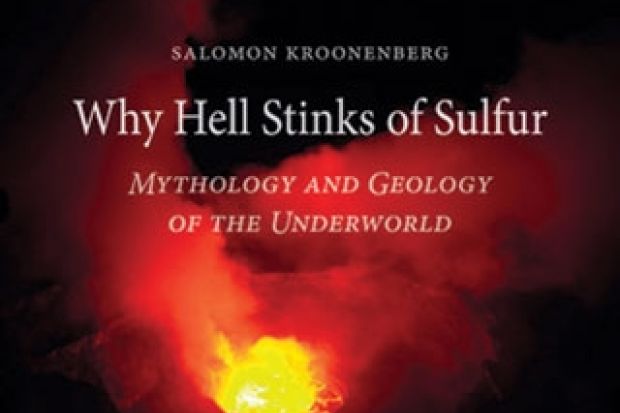“Why”, wonders Salomon Kroonenberg, “do astronomers get to study heaven and we geologists hell?” More importantly, is there geological evidence that hell actually exists? In Why Hell Stinks of Sulfur, Kroonenberg embarks on a physical and metaphorical journey to explore the hidden Earth beneath our feet – the subsurface underworld that has done so much to capture our imagination, but about which we still know so little. Using Dante’s circles of hell as a rough guide, and weaving together two seemingly unrelated topics – geology and classical mythology – he takes the reader down through successively deeper levels into “gobstopper Earth”, colouring his explanations of scientific phenomena with mythical tales and personal reminiscences from his professional career as a geologist.
Kroonenberg begins by seeking the entrance to the underworld. His investigations uncover not just one, but several possible entry points peppered around the Mediterranean and Black Sea region, revealing a fascinating link between the formation of limestone in an ancient ocean and the development of “classical culture”. Once underground he roams around Dante’s upper circles musing on the virtues of soil, exploring geological evidence for the mythical underground rivers that carried the Indifferent into Limbo, tracing ideas about the formation of metallic ores from the philosophers of ancient Greece to the modern day, and exposing the role of humans in removing critical evidence for Earth’s internal processes and history.
At about 6,300km, the distance from Earth’s surface to its core is roughly equivalent to that separating London from Chicago, yet amazingly the depth to which we have drilled so far would take us only to Slough! Beyond this point we descend beneath Dante’s seventh circle, down through the abyss inhabited by the monster Geryon and undiscovered subterranean life forms, to the depths as yet unseen by the human eye and observable only with the “binoculars” of modern seismology. Here we really do enter the realm of science fiction, journeying through Earth’s interior towards its enigmatic core, passing along the way through the “hollow Earth” erroneously proposed by Edmond Halley, and populated by the lost tribes and prehistoric creatures of Edgar Rice Burroughs and Jules Verne.
A real strength of Kroonenberg’s approach is that he does not simply seek to dispel myths and biblical tales with science, but carefully considers the evidence for their origins found preserved in the lakes, mountains, caves, boreholes and mines encountered during his personal and professional travels. His arguments and explanations are well supported with photographs and schematic diagrams (some of which would benefit from the addition of a scale), as well as illustrations from historical documents. And he does not limit his search to physical manifestations of the underworld; he also describes numerous metaphorical incarnations of hell, including labouring in Swedish copper mines, negotiating Swiss planning committees and, for Inge Lehmann, Danish seismologist and the discoverer of Earth’s solid inner core, simply being a “woman in a man’s world”. Arguably the most pertinent metaphor is the “Hell under construction” that Kroonenberg encounters during his final imaginary journey from Earth’s core back to the surface.
But perhaps the most engaging aspect of Why Hell Stinks of Sulfur is that Kroonenberg never loses sight of the human angle of his quest to find hell, telling the stories of the people and civilisations past and present that he encounters on his journey, and weaving a plea throughout the book for humans to resist depleting Earth of all its riches – be they minerals, ores, hydrocarbons or simply a boundary between two layers of rock containing secrets about past geological events – and to leave something behind for future generations to ponder and marvel at.
Why Hell Stinks of Sulfur: Mythology and Geology of the Underworld
By Salomon Kroonenberg
Reaktion, 304pp, £25.00
ISBN 9781780230450
Published 24 July 2013




